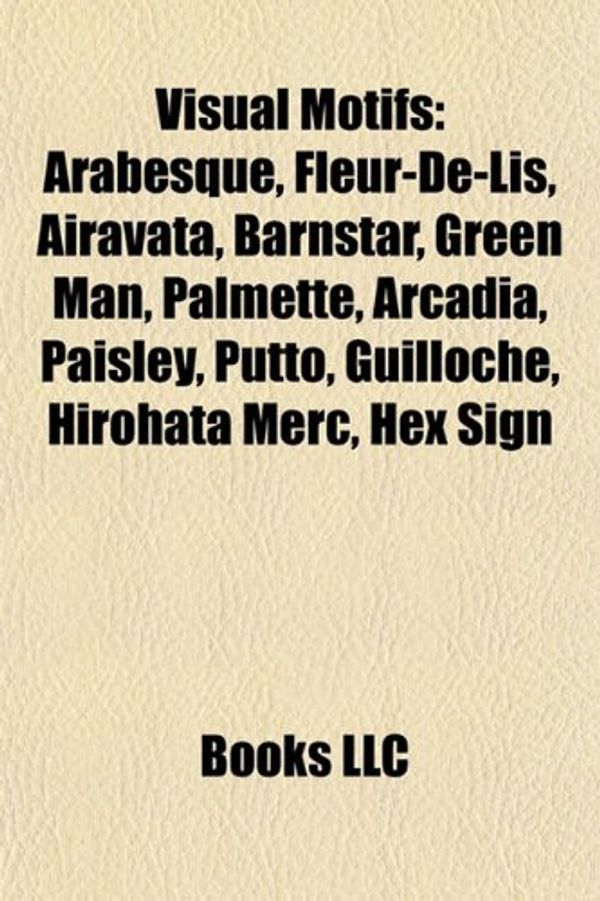Visual Motifs: Arabesque, Fleur-de-lis,
Arabesque, Fleur-de-Lis, Diapering, Airavata, Barnstar, Barber's Pole, Three Hares, Green Man, Hexagram, Taijitu, Palmette
Books Llc

| ISBN: | 9781156652565 |
| Publisher: | Books LLC, Wiki Series |
| Published: | 22 May, 2010 |
| Format: | Paperback |
| Editions: |
64 other editions
of this product
|
Visual Motifs: Arabesque, Fleur-de-lis,
Arabesque, Fleur-de-Lis, Diapering, Airavata, Barnstar, Barber's Pole, Three Hares, Green Man, Hexagram, Taijitu, Palmette
Books Llc
Please note that the content of this book primarily consists of articles available from Wikipedia or other free sources online. Pages: 78. Chapters: Arabesque, Fleur-de-lis, Diapering, Airavata, Barnstar, Barber's pole, Three hares, Green Man, Hexagram, Taijitu, Palmette, Nsibidi, Arcadia, Paisley, Triquetra, Velificatio, Monogram, Guilloch, Laurel wreath, Hex sign, Putto, Acanthus, Vesica piscis, Pin striping, Form constant, Lintel, Triple spiral, Ens, Endless knot, Hitsuzendo, Meander, Motif, Rosette, Moresque, Scrollwork, Koru, Kbach, Baekje smile, Sunburst, Adinkra symbols, Anchor plate, Perl e, Tomoe, Distelfink, Vignette, Engine turnings, Mille-fleur, Bowen knot, Strapwork, Okir, Four happiness boys, Xenia motif, Mitsudomoe, Death and the Maiden, Persian motifs, Curlicue, Starburst. Excerpt: A barber's pole is a type of sign used by barbers to signify the place or shop where they perform their craft. The trade sign is, by a tradition dating back to the Middle Ages, a staff or pole with a helix of colored stripes (usually red, white, and blue in the United States; often red and white in other countries). The pole may be stationary or may revolve, often with the aid of an electric motor. A "barber's pole" with a helical stripe is a familiar sight, and is used as a secondary metaphor to describe objects in many other contexts. For example, if the shaft or tower of a lighthouse has been painted with a helical stripe as a daymark, the lighthouse could be described as having been painted in "barber's pole" colors. Antique red and blue striped pole in Pottstown, PennsylvaniaThe origin of the red and white barber pole is associated with the service of bloodletting and was historically a representation of bloody bandages wrapped around a pole. During medieval times, barbers performed surgery on customers, as well as tooth extractions. The original pole had a brass wash basin at the top (representing the vessel in which leeches were kept) and bottom (representing ...
Shop Preferences
Customize which shops to display. You can include the following shops by logging in to change your settings.


















